Protests in Colombia have continued into a second week, inflamed in part by the death of an 18-year-old protester who was hit in the head by a police projectile.
As news spread of Dilan Cruz’s death on Monday night, thousands of Colombians took to the streets again that evening, condemning what they called a heavy-handed police response.
Colombia’s President Iván Duque said that he deeply regretted the death of Dilan Cruz and expressed his sincere condolences to his family in a tweet on Nov. 26.
Cruz is the fourth person to be killed during the protests that have rocked Colombia for the past week. The protests began on Nov. 21 after hundreds of thousands of Colombians took to the streets to protest against Duque and his right-wing government. The anti-government protests spilled into their seventh day on Wednesday.
People from many backgrounds—including students, teachers, pensioners and union members—braved the torrential rain to join one of the largest mass demonstrations Colombia has witnessed in recent years on Nov. 21, according to multiple media reports.
“It was astonishing!” María Camila, a 23-year-old Colombian who joined the protests on Nov. 21, tells TIME. “Everyone was outside.”
Unlike other protests in Latin America, the protests in Colombia were not fighting for a single issue. Instead, Colombians were voicing their criticism of the government’s lack of action in addressing major concerns over security, corruption and economic inequality among other issues.
The protests, described by organizers as a national strike, were mostly peaceful, but as the sun set on Nov. 21, riot police began firing tear gas at protesters—including those who had reportedly blocked bus routes in Bogotá, Colombia’s capital. Three people died on the first day of the protests amid social unrest, according to government officials.
Here’s what to know about the protests in Colombia.
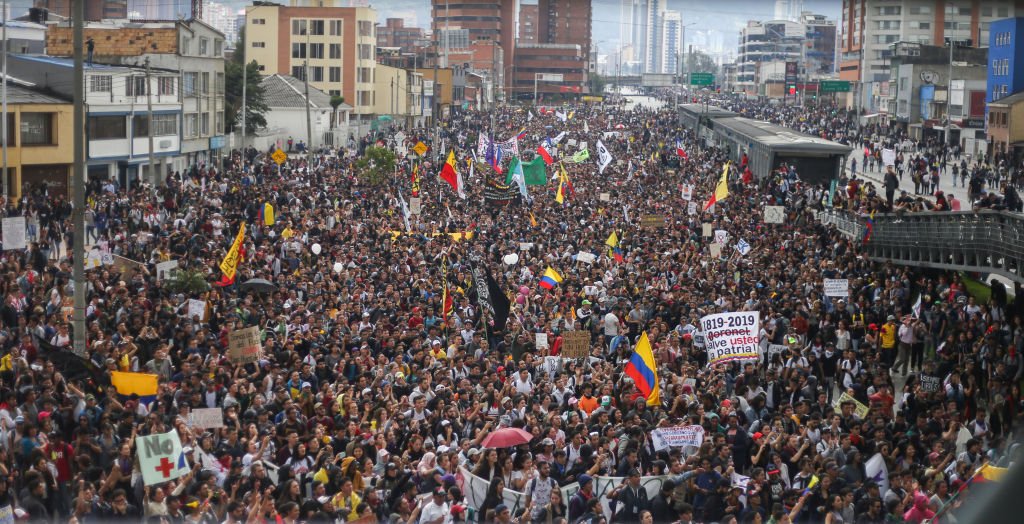
How did the protests start?
Dressed in rain jackets and equipped with umbrellas, thousands of protesters walked the streets of Bogotá on Nov. 21 and congregated in the city’s historic Plaza de Simón Bolívar where they sang the national anthem.
The protests were triggered by a rumored proposal to cut pensions—though it was never formally announced by the government. Colombia’s trade unions announced a general strike on Oct. 10 against the proposal.
The proposed cuts were a watershed moment for national dissatisfaction with President Iván Duque’s government. The President, whose approval rating has dropped to around 30% since he took office in August 2018, has been accused of being ineffectual.

“Duque is a very unpopular president,” Christopher Sabatini, the senior fellow for Latin America at Chatham House, a U.K.-based think tank, tells TIME.
“He’s seen as being a weak president both in terms of a couple of stumbles — a tax reform that he submitted to Congress and then pulled back [in October]— as well as being somewhat of a puppet for former President Álvaro Uribe Velez.”
Uribe governed Colombia from 2002 to 2010 and backed Duque during his presidential campaign.
“The biggest problem of the government of Iván Duque is that it is not showing results,” Camila, who joined protests in her hometown of Bogotá, tells TIME.
The protesters expressed anger over economic inequality and corruption. There are also deep political divides over the government’s handling of the country’s peace process. Many protesters expressed frustration over what they call the slow rollout of the country’s historic 2016 peace deal with the Revolutionary Armed Forces of Colombia (FARC) rebel group. The Peace Accord formally ended five decades of civil conflict that killed 220,000 and uprooted millions from their homes.
Many are also frustrated with Duque’s lack of action in protecting social leaders and indigenous people, who are being murdered at alarming rates in Colombia. Some demonstrators held rainbow indigenous flags in solidarity, and others held banners listing the names of those killed since 2016.
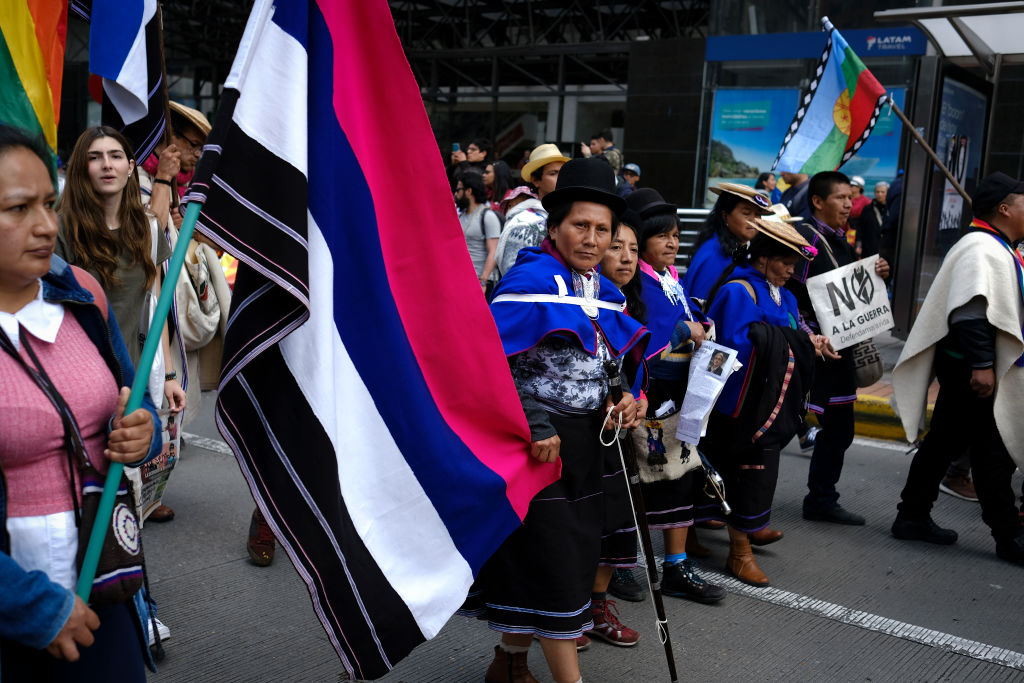
“There’s a high lack of trust and credibly in the government in reviewing human rights abuses,” argues Sabatini, the Chatham House expert.
Tensions deepened in recent weeks after a government-led airstrike against a camp of dissident FARC rebels reportedly killed at least eight children in August. The government had initially denied that any children had been killed, but Roy Barreras, a senator from an opposition party revealed that at least eight children aged between 12 and 17 were killed during an aerial raid. The airstrike led to the resignation of Duque’s defense minister, Guillermo Botero, on Nov. 6.
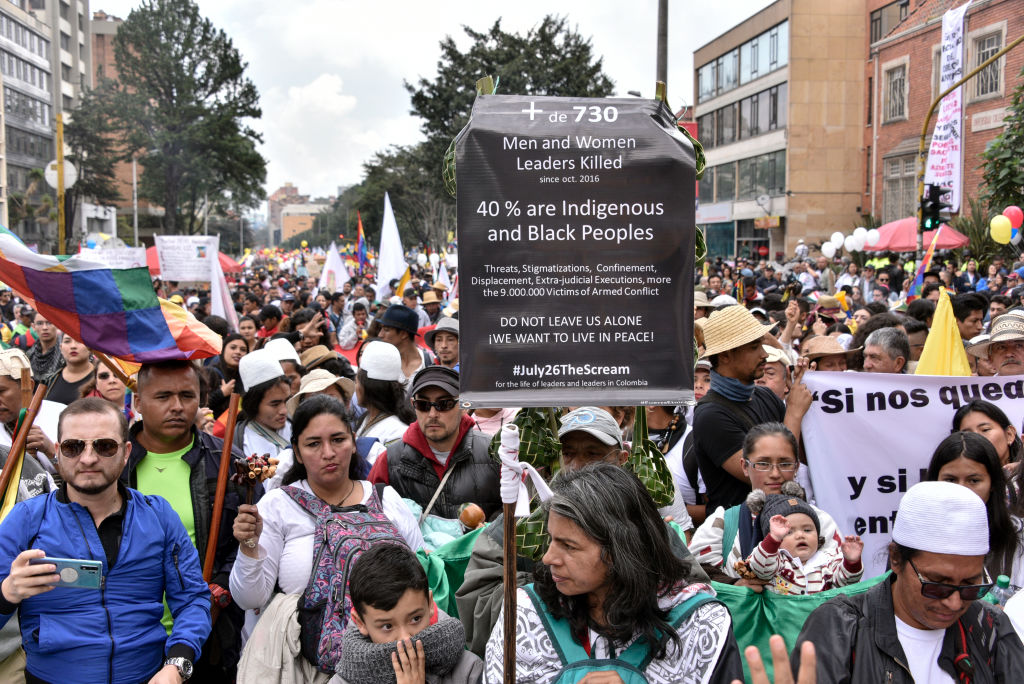
For Camila, the attack on the minors was the main reason she went out to protest on Nov. 21.
“If the peace agreement were being fulfilled, things like that would not be happening,” she says. “There are many guerrillas who relied on the process to re-socialize and this government is slowly letting us return to the worst days of war.”
What do the protesters want?
Because of the broad range of groups joining the protests in Colombia, there is no one set goal.
The environmental groups were marching to demand the protection of grasslands and the prohibition of fracking in the country, while animal rights groups were protesting to ban shark hunting.
Meanwhile, women’s rights groups joined groups of mothers of victims of the conflict in Colombia in demanding gender equality policies, while other groups protested against the government’s rumored pension reform and labor reform.
“Public anger has been simmering for a very long time,” Sabatini says.
Economic inequality is also a major concern. Like in Chile, many in the expanding middle class in Colombia feel left behind as the economy continues to grow, argues Sabatini. Colombians are concerned about possible changes to pension and tax reforms, minimum wage, and the privatization of state companies. The government insists there are no planned pension or tax reforms.
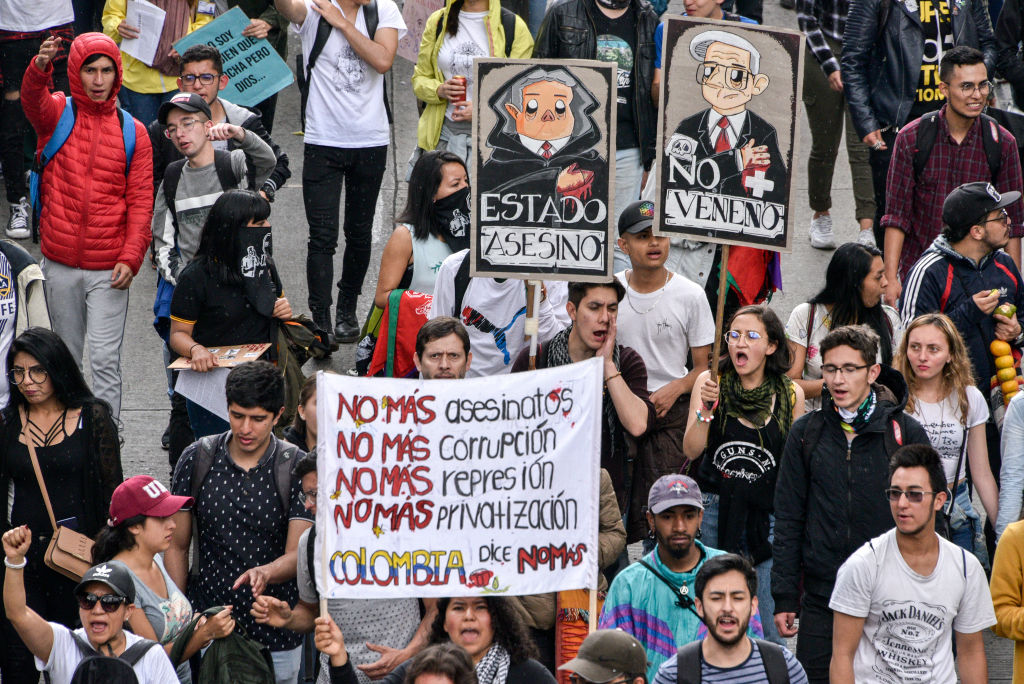
“It is not the economy that grows, as Duque and his friends say,” Gustavo Petro, an opposition senator who ran against Duque for the Presidency last year, tweeted on Nov. 20. “It is the profits of the bankers that grow, which means that they are sucking the economy.”
Colombia’s economy is expected to grow by 3.3% for 2019, according the World Bank.
“There was the expectation that the rising tide would lift all boats, but not all boats have been lifted due to a large number of structural issues and exclusion and prejudice,” Sabatini says.
For some, a change of cabinet of ministers would be enough. But for Camila, the Bogotá protester, it is not. “The reality is that even if the leaders change, the strategy to address the problems would remain the same,” she says, adding: “We need them to listen to the people, we need Duque to govern for all.”
Has there been any violence?
Last week, the mostly peaceful protests turned violent as the sun started to set in Colombia on Nov. 21. In Plaza de Simon Bolivar and at the National University in Bogotá, teargas was fired as protesters wielding rocks and bottles and chanting “Get out Duque” battled with riot police.
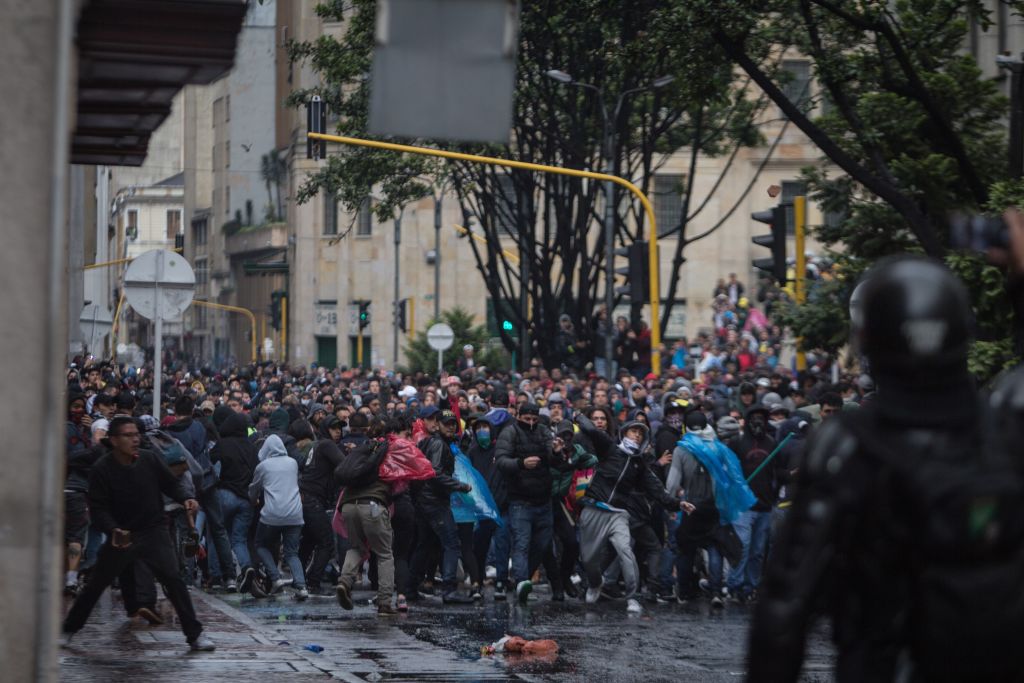
Clashes also broke out between protesters and security forces near Bogotá airport and in Cali, Colombia’s third largest city, police reported that 23 officers were injured, out of 28 injured nationally. The violence prompted the mayor of Cali to announce an overnight curfew.
Three people were killed on Nov. 21, Defense Minister Carlos Holmes Trujillo said on Nov. 22. Two people died in the city of Buenaventura, where a group of people tried to loot a shopping centre, and a third death was reported in the town of Candelaria, Trujillo said.
On Saturday, 18-year-old Dilan Cruz was fatally injured during the protests in Bogotá after he was hit on the head by a projectile fired by police. In videos circulating social media, the teenager can be seen running away from riot police and falling to the ground as he was reportedly shot by a rubber bullet.
Fellow protesters can be heard screaming “they hit him, they hit him” as they run to Cruz’s aid as smoke from the projectile surrounds his fallen body. Emergency services medics can be seen treating Cruz on the street.
Cruz was taken to San Ignacio Hospital in Bogotá where Dr Juan Manuel Martínez diagnosed a traumatic brain injury as a result of a “penetrating” object. Cruz’s death was announced on Monday and Colombians poured into the streets to demonstrate against the government and lit candles to commemorate his death. Cruz was supposed to graduate from high school on Monday morning.
A friend of Dilan Cruz told Colombian news organization El Espectador that they had been “marching and the Esmad [riot police] threw stun grenades and tear gas canisters.”
“Dilan went to the front to kick back a tear gas canister, because it had landed next to old people. That’s when they shot him at point blank range,” he added. “They say it was a rubber bullet, which hit the right side of the head, above the neck.”
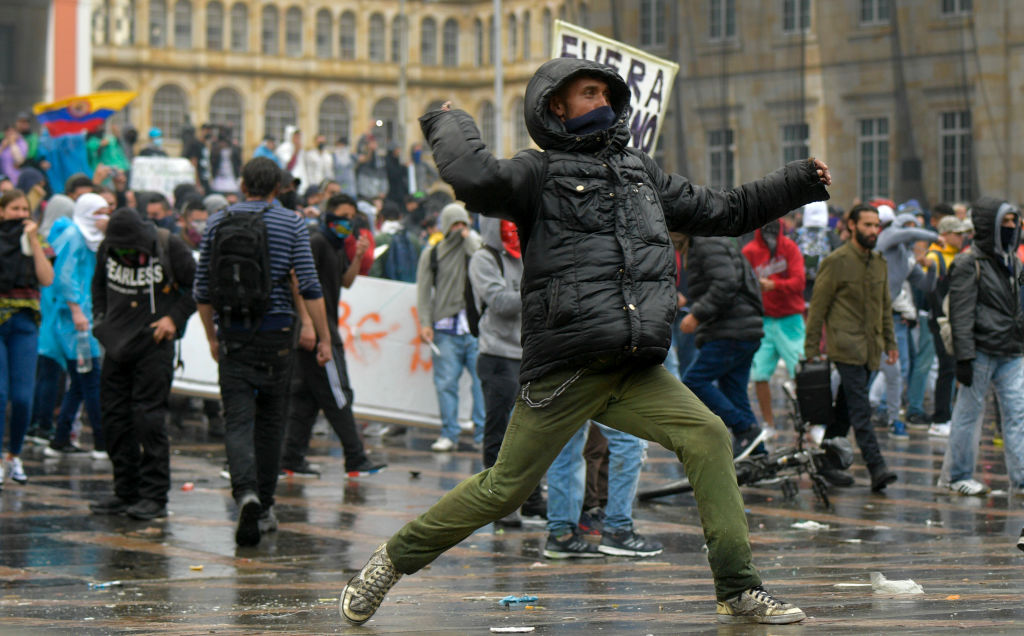
How has the government responded?
The Colombian government assigned soldiers to monitor the streets ahead of the marches and closed the country’s border on Nov. 20 ahead of the strikes.
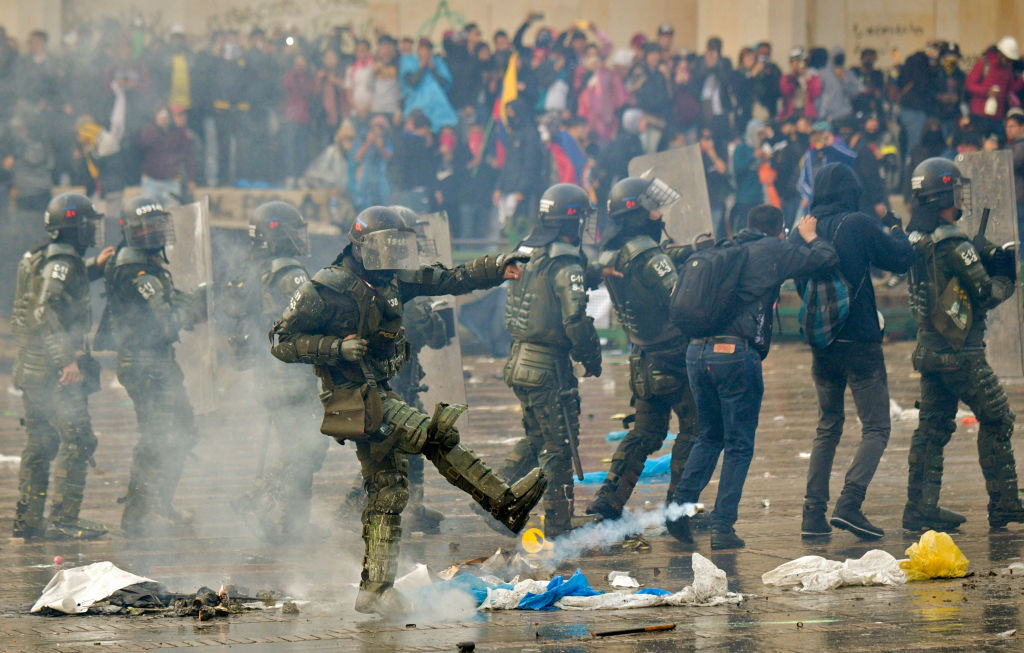
Prior to the protests, the government repeatedly warned that it would not tolerate violence. Duque called for peace on Nov. 20 in a nationally televised public address, but said the government would “guarantee order and defend you with all the tools the constitution grants us”.
In a televised address early on Nov. 22, Duque said: “Today, Colombians spoke. We hear them. Social dialogue has been a main principle of this government and we need to deepen it with all sectors of society and speed up the social agenda and the fight against corruption.”
In response to Cruz’s death, Duque tweeted on Tuesday: “We deeply regret the death of young Dilan Cruz. We express our sincere condolences to his mother, grandfather and two sisters.”
“I reiterate my solidarity with his family,” Duque added.
Duque announced concessions to his tax bill on Tuesday, by including provisions for disadvantaged populations in the bill, according to Reuters. The bill currently includes tax cuts for businesses.
The President suggested that less affluent retirees could make fewer contributions to the healthcare system, and a value-added tax could be returned to the poorest fifth of Colombians.
How does this demonstration fit in with Colombia’s history of protests?
In October, students and labor unions were demonstrating against the government due to a lack of funding and reforms in their sectors. In the past, protests have failed to attract large turnouts.
“In the days of the civil war, protests were fewer and more limited, there was always the shadow of violence hanging over social movements and social protests,” argues Sabatini. But now, hundreds of thousands of protesters took to the street in Colombia, marking a change in the country’s history of protests.
Sabatini argues that this may have been inspired in part by protests happening across Latin America in countries such as Bolivia and Chile. “I do think people are looking across the region and seeing protests and some of them successful,” he says. “It’s capturing public attention.”
Compared to earlier smaller demonstrations organized by students, the protest on Nov. 21 brought together collective support by political, social, labor, indigenous, women’s and student groups.
What next for Colombia?
Sabatini belies that because there is no focused agenda of the protests, they may falter in the coming days.
“The protests have successfully brought together a lot of different groups, but there is no one rallying cry or one coherent social movement organizing so it will be difficult to sustain it in an organized fashion,” Sabatini says.
But, Sabatini and others believe that protests will continue in Colombia and Latin America as a whole. “I think you’ll continue to see, and across the region, the slow boil of protests,” he argues. “They will be more sporadic, more individualized.”
More Must-Reads from TIME
- Caitlin Clark Is TIME's 2024 Athlete of the Year
- Where Trump 2.0 Will Differ From 1.0
- Is Intermittent Fasting Good or Bad for You?
- The 100 Must-Read Books of 2024
- Column: If Optimism Feels Ridiculous Now, Try Hope
- The Future of Climate Action Is Trade Policy
- FX’s Say Nothing Is the Must-Watch Political Thriller of 2024
- Merle Bombardieri Is Helping People Make the Baby Decision
Contact us at letters@time.com